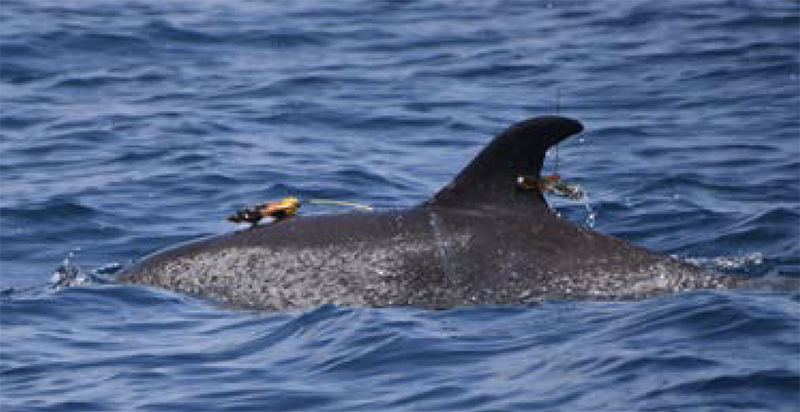High-resolution data-loggers reveal fine-scale movement and foraging behavior of offshore dolphins

“Bill,” an Atlantic spotted dolphin, with a satellite-linked tag on his dorsal fin and DTAG on his back upon release in September 2022.
During offshore health assessments in September 2022, we deployed digital-acoustic archival tags (DTAGs) via suction cups on three dolphins — two bottlenose dolphins and one Atlantic spotted dolphin. The acoustic sensors on the DTAGs detect echolocation clicks, showing when the dolphins were searching for or homing in on prey, while the accelerometers and magnetometers reveal the animals’ movements. The tags are designed to release and float to the surface, while transmitting a location so a tag can be recovered. One tag on a bottlenose dolphin stayed attached overnight for 17.5 hours.
The tags showed that both bottlenose dolphins resumed foraging soon after the health assessment, while the spotted dolphin rejoined its group and continued traveling. One bottlenose dolphin, Ken, resumed foraging 5 minutes after release. While the attachment durations are short compared to the length of time that satellite-linked tags are attached, these fine-scale data help us understand their acoustic communication and give us a glimpse into their foraging behavior, including the depth, time of day, and body orientation and movement during feeding. These records help researchers interpret behavior from the longer-duration satellite-linked tag deployments.
—Austin Allen and Jeanne Shearer, Duke University, and Frants Jensen, Aarhus University




